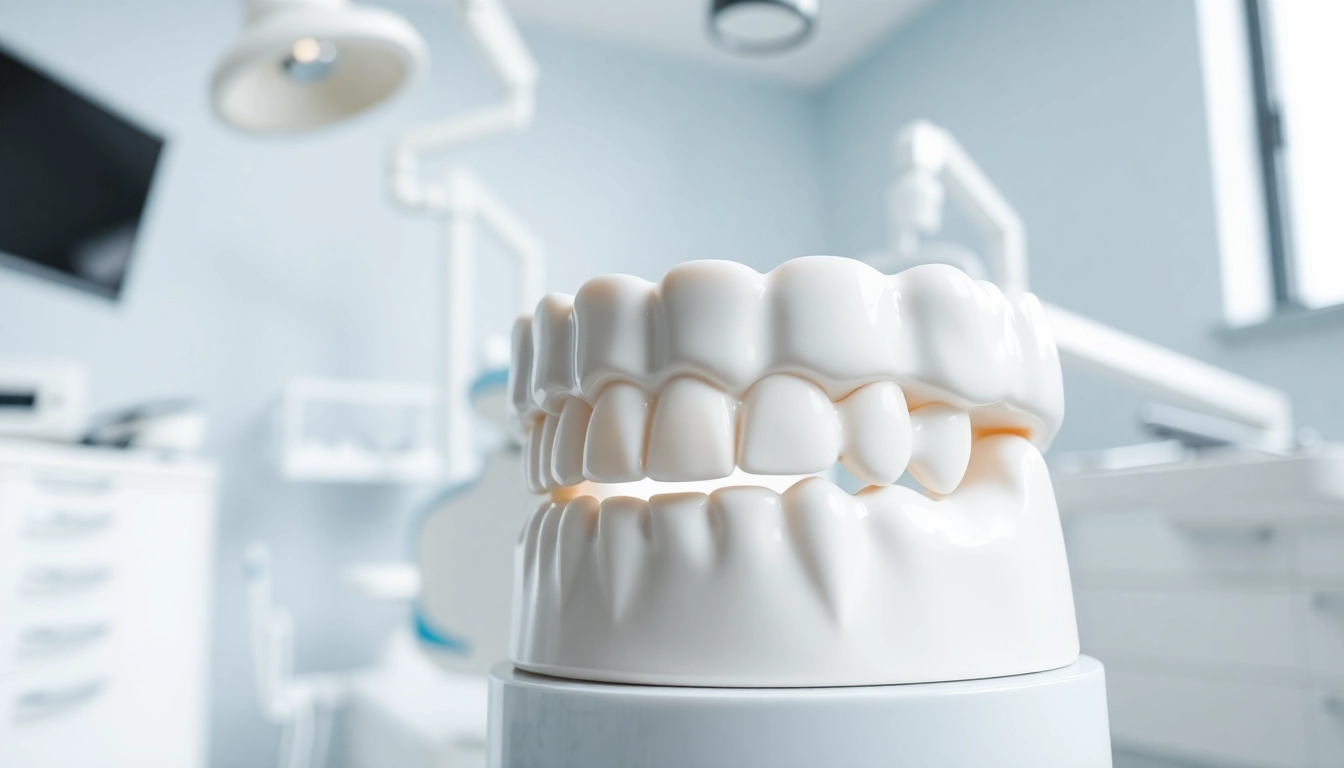What Are Dental Crowns?
Definition and Purpose of Dental Crowns
A dental crown, often referred to as a tooth crown, is a specialized dental restoration that serves as a cap, covering the entirety of a tooth or dental implant. Crowns are typically crafted from a variety of materials, including porcelain, ceramic, metal, or resin, to restore the function and aesthetic appearance of damaged or compromised teeth. Their primary purpose is to strengthen the tooth, improve its shape and size, and enhance its appearance, making it an essential component of restorative dentistry.
Common Reasons for Crowns
Dental crowns are often recommended for several reasons, including:
- To support a weakened or fractured tooth
- To restore a tooth after a root canal treatment
- To cap teeth that are severely worn or decayed
- To improve the aesthetic appearance of misshaped or discolored teeth
- To anchor a dental bridge or cover a dental implant
Understanding when a crown is necessary can help patients prevent further dental issues and maintain their oral health. It is advisable to consult with a dental professional to determine if a crown is the appropriate solution for an individual’s specific dental needs.
Comparison with Other Dental Restorations
Dental crowns serve a distinct function compared to other dental restorations such as fillings, veneers, and bridges. While fillings are used for minor cavities, crowns provide a comprehensive solution for extensive damage. Veneers, on the other hand, are thin shells designed primarily for cosmetic enhancement, while bridges are used to replace one or more missing teeth by anchoring to adjacent teeth. Crowns thus offer a more holistic restoration of a tooth’s structure and function.
Types of Dental Crowns
Porcelain and Ceramic Crowns
Porcelain and ceramic crowns are highly favored for their aesthetic qualities. They can be color-matched to blend seamlessly with natural teeth, making them an excellent choice for visible areas, such as the front teeth. These crowns are both durable and resistant to staining, although they can be more fragile compared to metal options. Additionally, advancements in dental ceramics have enhanced their strength, making them a reliable long-term solution for many patients.
Metal Crowns and Their Benefits
Metal crowns include those made of gold alloy, silver alloy, or other metal types. One of the key benefits of metal crowns is their exceptional strength and durability, making them ideal for molars that endure significant chewing forces. They are also less prone to cracking and require less tooth reduction compared to other types. However, the metallic appearance can detract from the aesthetic appeal, leading patients to favor porcelain crowns for visible teeth.
Resin Crowns: Applications and Uses
Resin crowns, composed of composite materials, can be less expensive than other types and provide a natural appearance. They are primarily used in temporary situations while waiting for a more permanent solution. However, resin crowns are not as durable as porcelain or metal options and are more prone to wear and discoloration over time, limiting their long-term usage.
The Dental Crown Procedure
Initial Consultation and Diagnosis
The process of obtaining a dental crown typically begins with an initial consultation where a dentist conducts a thorough examination of the patient’s oral health. X-rays may be taken to assess the roots of the tooth and surrounding bone structure. Based on the diagnosis, the dentist will explain the need for a crown and discuss suitable material options.
Steps Involved in Crown Placement
The crown placement process generally consists of multiple steps:
- Preparation: The dentist will prepare the affected tooth by removing decay and shaping it to fit the crown.
- Impression: An impression of the tooth is taken to create a custom crown. Digital scanning techniques may also be employed for precision.
- Temporary Crown: A temporary crown may be placed to protect the tooth while the permanent crown is being fabricated.
- Crown Placement: Once the permanent crown is ready, the dentist will ensure the fit and color match before cementing it in place.
Post-Procedure Care and Recovery
Post-procedure care is crucial to ensure the longevity of the crown. Patients are advised to avoid hard and sticky foods for the first 24 hours. Regular brushing and flossing are essential, along with routine dental check-ups to monitor the health of the crowned tooth and surrounding gums.
Cost Considerations for Dental Crowns
Average Costs for Different Materials
The cost of dental crowns can vary significantly based on the material used and the complexity of the case. On average, prices may range as follows:
- Porcelain crowns: $800 – $3,000 per tooth
- Porcelain-fused-to-metal crowns: $500 – $1,500 per tooth
- Metal crowns: $600 – $2,500 per tooth
- Resin crowns: $300 – $1,000 per tooth
Insurance Coverage and Payment Options
Many dental insurance plans cover a portion of the costs associated with dental crowns, particularly when deemed medically necessary. It is advisable for patients to check their specific insurance details and inquire about co-pays or deductible limits. Many dental practices also offer flexible payment plans to assist patients in managing their dental expenses more comfortably.
Factors Affecting Crown Prices
Several factors influence the cost of dental crowns, including:
- The type and quality of materials used
- Geographical location of the dental practice
- The complexity of the dental issue being treated
- Additional procedures required (e.g., root canals or tooth extractions)
Patients are encouraged to discuss all potential costs upfront with their dental provider to avoid unexpected expenses.
Maintaining Your Dental Crowns
Best Practices for Care and Hygiene
Maintaining dental crowns requires diligent oral hygiene practices. Regular brushing with fluoride toothpaste, daily flossing, and using an antibacterial mouthwash can help ensure the health of the crowned tooth and surrounding structures. It is also recommended to avoid habits that can strain crowns, such as nail-biting, chewing on hard objects, or teeth grinding.
Common Issues and How to Address Them
Some patients may experience issues with their crowns, such as:
- Discomfort or sensitivity: This may be temporary and often subsides. If discomfort persists, a dentist should be consulted.
- Loose crowns: If a crown feels loose, it is important to contact a dentist immediately for re-cementation.
- Crown discoloration: Over time, crowns, particularly those made from resin, may appear stained. Professional cleaning can help restore their appearance.
When to Schedule Follow-Up Appointments
Patients should schedule follow-up appointments at regular intervals to ensure the longevity of their crowns. Typically, biannual dental check-ups are sufficient, but additional visits may be warranted if any concerns arise regarding the crown or surrounding teeth. Maintaining open communication with the dental provider fosters better outcomes and addresses issues before they escalate.



